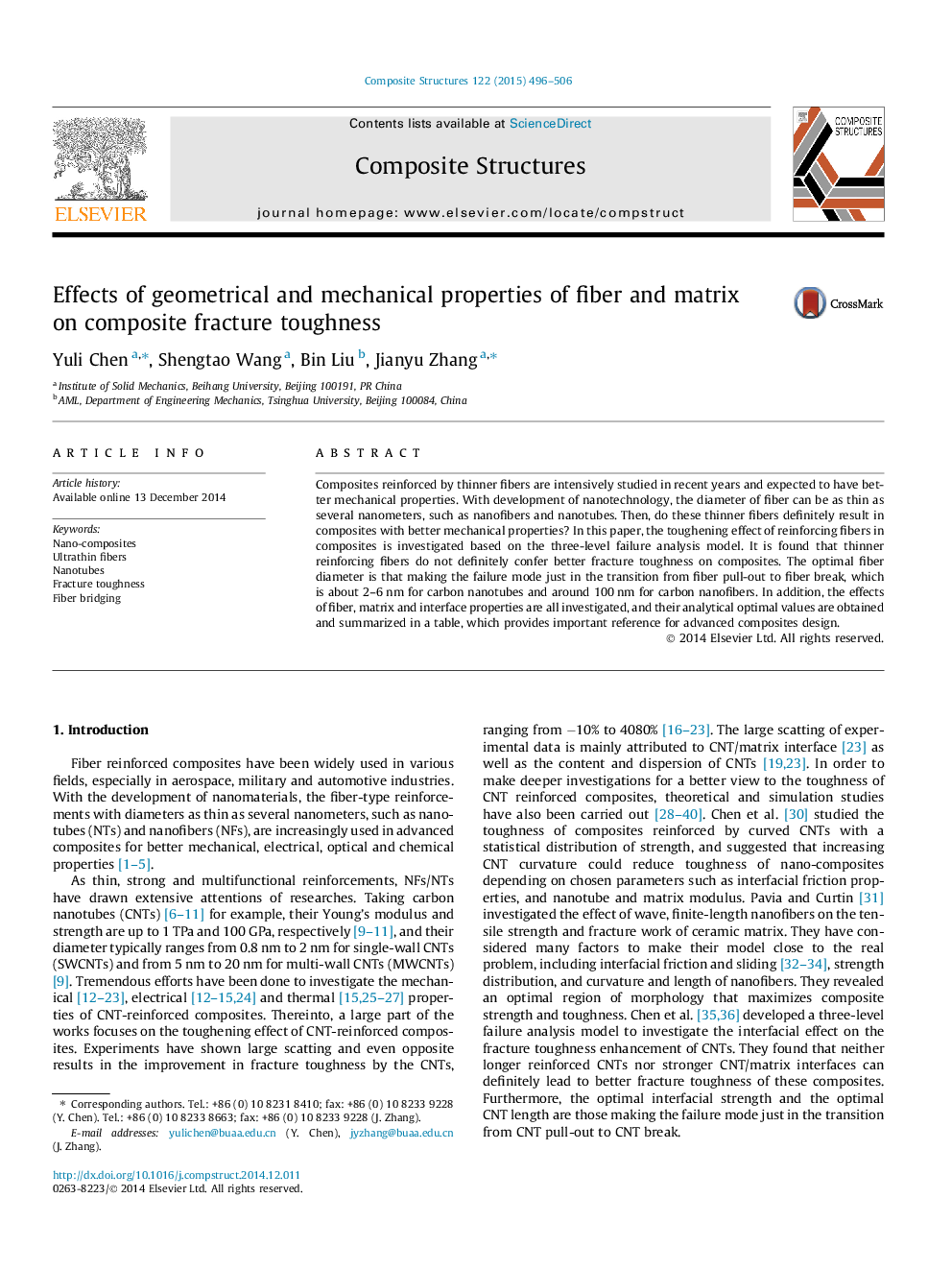| Article ID | Journal | Published Year | Pages | File Type |
|---|---|---|---|---|
| 251426 | Composite Structures | 2015 | 11 Pages |
Composites reinforced by thinner fibers are intensively studied in recent years and expected to have better mechanical properties. With development of nanotechnology, the diameter of fiber can be as thin as several nanometers, such as nanofibers and nanotubes. Then, do these thinner fibers definitely result in composites with better mechanical properties? In this paper, the toughening effect of reinforcing fibers in composites is investigated based on the three-level failure analysis model. It is found that thinner reinforcing fibers do not definitely confer better fracture toughness on composites. The optimal fiber diameter is that making the failure mode just in the transition from fiber pull-out to fiber break, which is about 2–6 nm for carbon nanotubes and around 100 nm for carbon nanofibers. In addition, the effects of fiber, matrix and interface properties are all investigated, and their analytical optimal values are obtained and summarized in a table, which provides important reference for advanced composites design.
